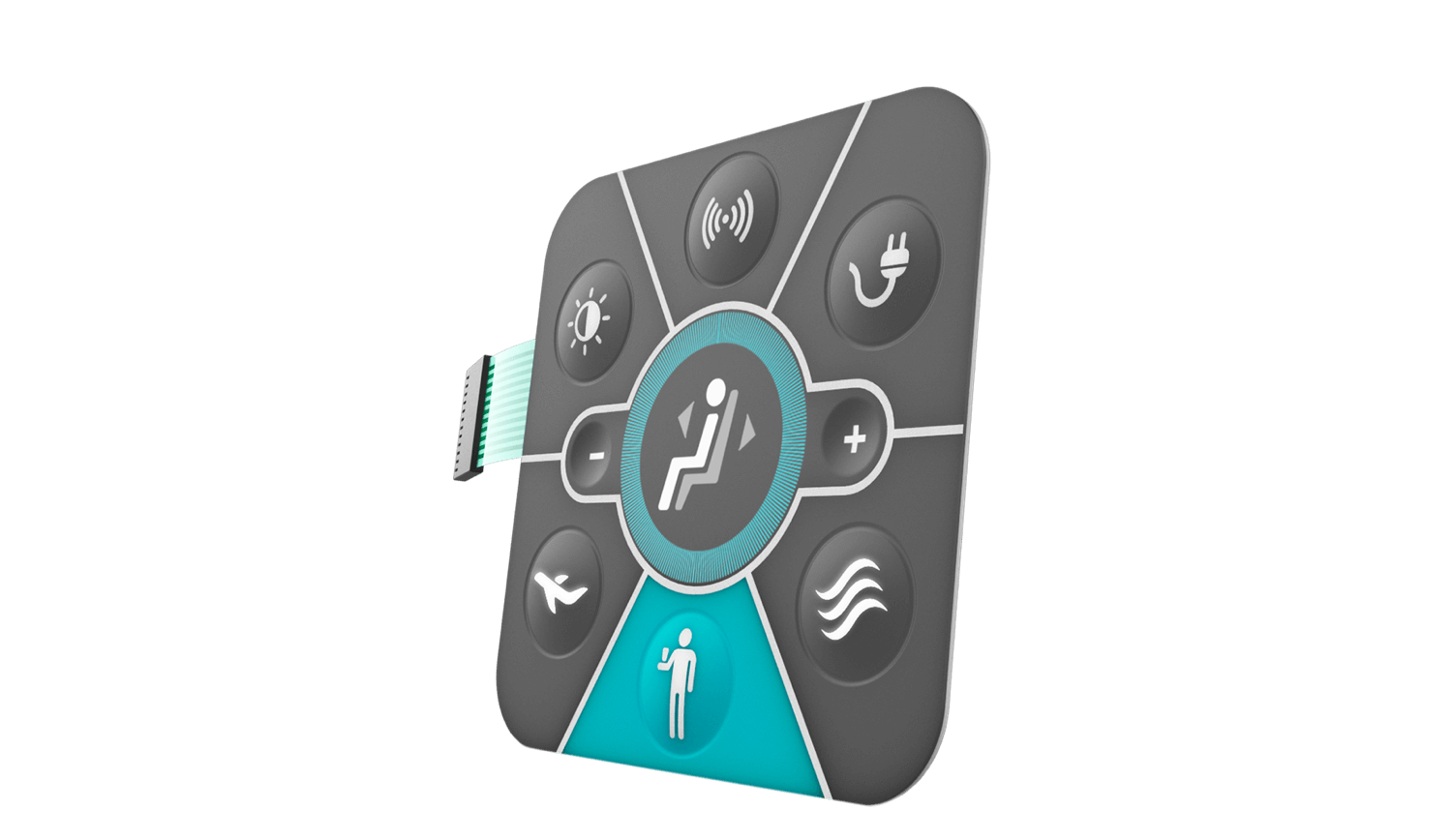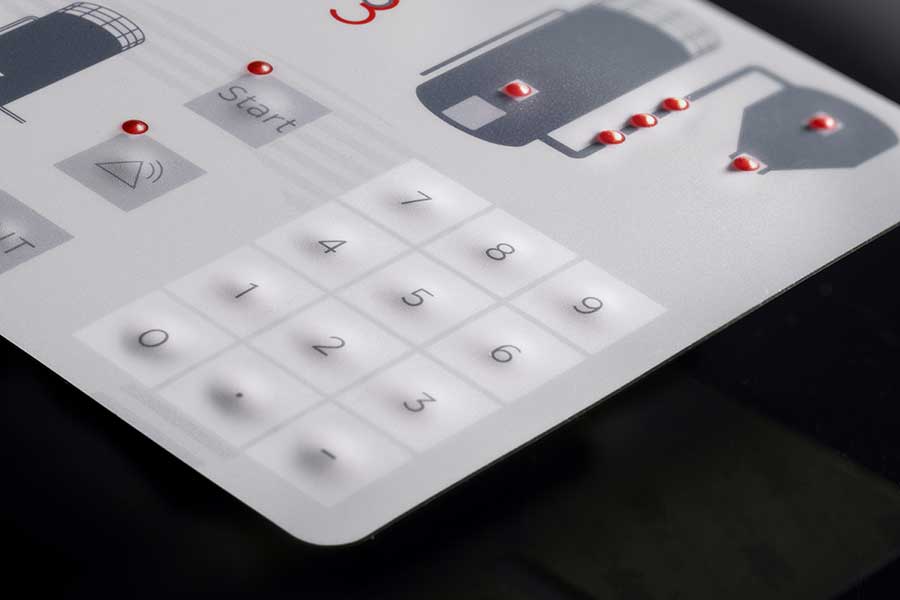Explore Different Types of Membrane Switch Technologies for Your Needs
Explore Different Types of Membrane Switch Technologies for Your Needs
Blog Article
Recognizing the Functionality of Membrane Layer Changes for User User Interface Tools
The performance of membrane switches stands for a substantial improvement in interface design, incorporating effectiveness with visual versatility. These switches operate through a multi-layered framework that converts user communications right into electrical signals, permitting for both small formats and durability against environmental factors. As markets increasingly focus on user experience, recognizing the nuances of membrane layer switch technology ends up being important. What effects do these developments hold for future applications, and just how might they redefine individual communications across numerous devices?
What Are Membrane Layer Buttons?
Membrane layer buttons are cutting-edge user interface devices that help with individual communication with digital devices. These functional parts are composed of multiple layers, consisting of a graphic overlay, spacer, and a published circuit layer. The layout enables a seamless combination right into various digital gadgets, improving both the aesthetic and practical elements of individual interfaces.
Membrane switches are typically utilized in a variety of applications, from household appliances to industrial equipment and clinical gadgets. Their building normally includes a slim profile, making them a suitable option for small designs. The tactile feedback provided by these buttons can be crafted to satisfy particular user choices, making certain reliable interaction between the user and the tool.
Longevity is one more significant advantage of membrane layer buttons, as they are resistant to dirt, wetness, and chemicals, which enhances their life-span popular atmospheres. Furthermore, these buttons can be personalized in terms of form, size, and visuals layout, permitting branding and user-specific attributes. In general, membrane layer changes represent a sensible service for enhancing customer experience in electronic devices, integrating functionality with visual appeal in a reliable manner.
Just How Membrane Switches Over Work
Operating on an uncomplicated principle, membrane layer switches utilize a layered building to sign up user input properly. Each switch includes several layers, consisting of a published circuit layer, a spacer layer, and a top graphic layer, which are made to interact effortlessly. When a user presses the top layer, it presses the spacer layer, bringing the conductive elements of the circuit layer into call with each other.
This call creates a closed circuit, signifying the device to perform a details function. The style enables various setups, consisting of responsive feedback, which can improve the customer experience by offering a physical experience upon activation. The products used in membrane switches commonly consist of adaptable substrates, such as polyester or polycarbonate, which make sure longevity and resilience versus damage.

Trick Benefits of Membrane Layer Switches

An additional substantial advantage is their density. Membrane buttons are slim and lightweight, which makes it possible for makers to conserve room in their gadgets without sacrificing performance. This feature is specifically helpful in applications where weight and quantity are critical factors to consider.
Additionally, membrane layer switches are immune to dirt, wetness, and chemicals, boosting their durability. This strength extends their life expectancy and reduces the requirement for frequent replacements, causing expense financial savings gradually.
Moreover, the tactile responses offered by membrane layer buttons can be optimized to enhance customer interaction. They can include attributes such as elevated buttons or audible clicks, enhancing use and individual experience.
Applications Throughout Industries
Customer interface tools utilizing membrane layer buttons are prevalent in a vast array of markets, showcasing their versatility and capability. Membrane Switch. In the medical industry, membrane layer switches are important to tools such as diagnostic tools and client tracking systems, where their resilience and convenience of cleaning are essential for maintaining hygiene standards. In a similar way, in the auto industry, these switches are utilized in control panel controls and infomercial systems, providing a sleek and modern interface for customers.
In addition, the customer electronics industry benefits from membrane buttons in devices and handheld devices, where small design and straightforward user interfaces improve individual experience. Industrial applications additionally utilize membrane layer switches over for control board this page in machinery and automation systems, emphasizing their robustness and resistance to harsh environments.
In the aerospace and protection why not try these out sectors, membrane layer switches are utilized in cabin controls and devices, where dependability and performance under severe problems are vital. In addition, the gaming industry significantly includes membrane buttons in controllers and gallery makers, adding to an engaging customer experience. Generally, the adaptability of membrane switches over enables their widespread use throughout many industries, underscoring their relevance in modern interface style.
Future Trends in Membrane Layer Change Technology

Furthermore, making use of sophisticated products, such as polycarbonate and polyester movies, is anticipated to rise, supplying boosted resilience and resistance to ecological stressors. These products contribute to the general durability of membrane layer switches, making them appropriate for harsher commercial applications.
Furthermore, the unification of smart technology, including IoT connection, will additional hints allow membrane switches to interact with other gadgets and systems, promoting an extra interactive customer experience. This fad straightens with the growing need for clever devices across different markets, from medical care to customer electronic devices.
Lastly, personalization choices are expected to broaden, enabling makers to produce bespoke options tailored to certain individual requirements and preferences. These developments will place membrane layer buttons as necessary elements in the advancement of interface innovation.
Final Thought
In conclusion, membrane layer changes stand for a critical development in user interface innovation, offering a reliable and functional solution for varied digital applications. As improvements in material scientific research and touch picking up innovations continue, the capability and applicability of membrane layer switches are anticipated to broaden, reinforcing their importance in modern-day electronic devices.
Report this page